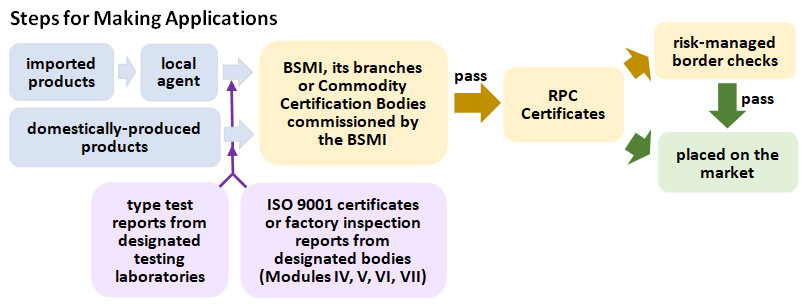Conformity Assessment Procedures & Commodity Inspection MarkRegistration of Product CertificationWhat is Registration of Product Certification (RPC)?
Registration of Product Certification is a scheme that allows the products to be certified before they are mass-manufactured. It adopts a modular approach and there are 7 modules covering the design and production stages of the product. A combination of modules will be assigned to each product announced to be subject to this scheme. All products are required to have their product type tested (Module II) by testing laboratories designated by the BSMI. The applicant shall draft a declaration of conformity-to-type and ensure that the manufactured commodities are in conformity with those in the type-test report (Module III). For products of high risk, a quality management system (Module IV, V or VI) or factory inspection (Module VII) will also be required to ensure repeatable production of products at the level confirmed by the type test of the product. RPC is usually an alternative to batch-based inspection procedures and the applicant may choose the one appropriate to their products.
After being certified and registered by the BSMI, products will be allowed to use the Commodity Inspection Mark. Additionally, these products can clear the Customs directly without any further inspection if they are not sampled by RPC border checks.The frequency of RPC border checks is low by default and may change based on the feedback from market surveillance activities.
Commodity Inspection Mark
Certified products shall bear the Commodity Inspection Mark, affixed to the body of the product by the business operator. An illustration is provided below.  
Latest Update:
2025年7月8日
|